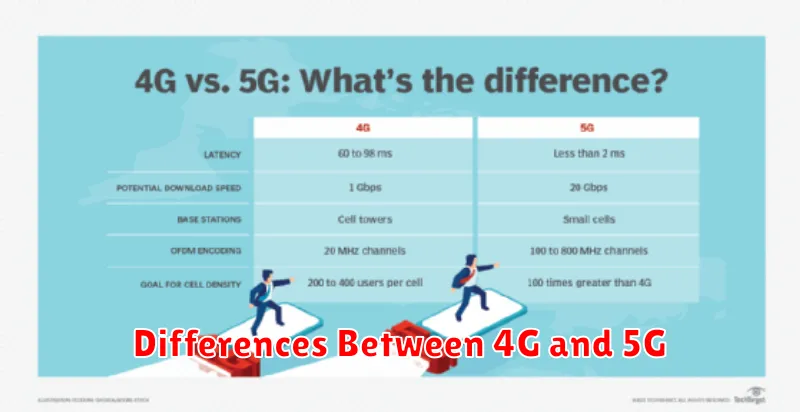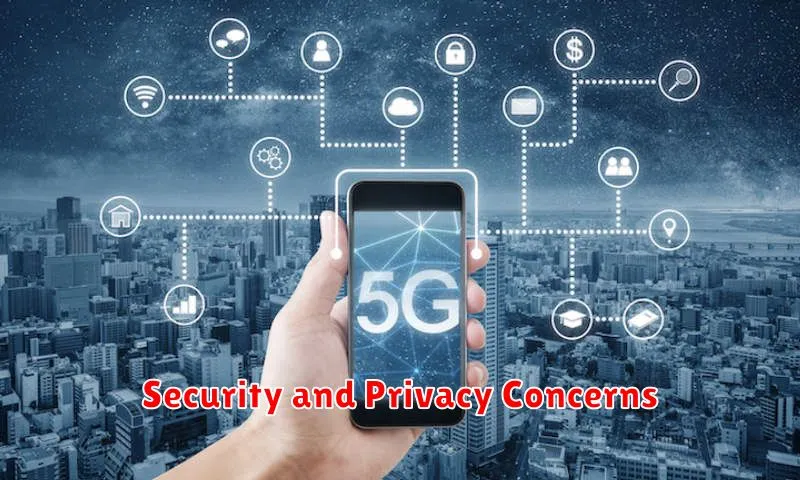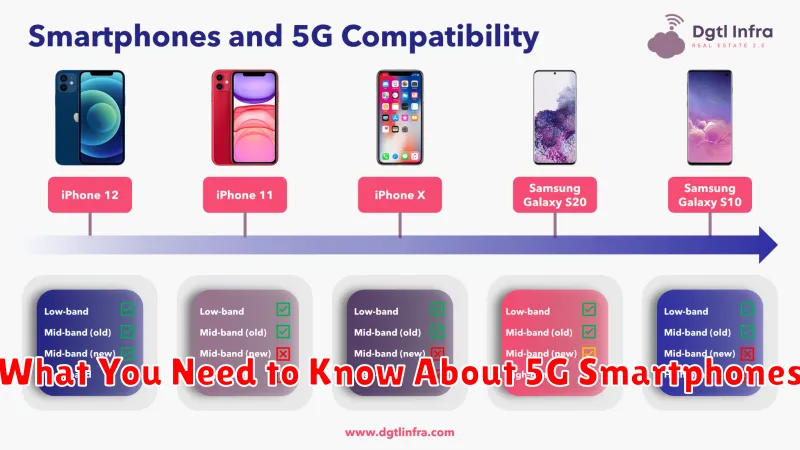5G smartphones are rapidly becoming the standard, offering significantly faster speeds and lower latency than their 4G predecessors. Understanding the benefits and potential drawbacks of this transformative technology is crucial for informed purchasing decisions. This article will delve into the key aspects of 5G smartphones, including the various 5G network types, device compatibility, performance enhancements, and the impact on battery life. Whether you’re considering upgrading to a 5G smartphone or simply curious about the technology, this guide will equip you with the knowledge you need to navigate the evolving world of mobile connectivity. Learn what truly matters about 5G and how it can enhance your mobile experience.
From 5G speed comparisons and network availability to the crucial discussion of cost and future implications, this article provides a comprehensive overview of 5G smartphones. We’ll explore the advantages of 5G connectivity for activities like streaming, gaming, and downloading, and address common concerns about 5G technology. Understanding the different 5G frequencies, including mmWave and sub-6GHz, is essential for maximizing your 5G experience. Stay informed about the latest advancements in 5G smartphones and make an educated choice about your next mobile device.
What is 5G Technology?
5G represents the fifth generation of wireless technology. It’s the successor to 4G LTE and promises significantly faster speeds, lower latency, and greater capacity.
This advancement is made possible by leveraging higher-frequency radio waves within the millimeter wave (mmWave) spectrum. While offering incredible speed, these frequencies have a shorter range than previous generations, requiring a denser network of base stations.
5G isn’t just about faster downloads. Its low latency, or reduced delay in data transmission, unlocks new possibilities for real-time applications, such as remote surgery and autonomous driving. The increased network capacity allows for a larger number of devices to connect simultaneously, crucial for the growth of the Internet of Things (IoT).
Benefits of 5G Connectivity
5G connectivity offers significant advantages over its predecessors. One key benefit is faster speeds, allowing for quicker downloads, smoother streaming, and enhanced online gaming experiences. This increased speed is facilitated by higher bandwidth.
Reduced latency is another crucial advantage. This means a decrease in the delay between sending a request and receiving a response, making real-time applications like video conferencing and online gaming more responsive and seamless. This near-instantaneous communication opens doors for new technologies and applications.
Finally, 5G enables increased network capacity. This means more devices can connect to the network simultaneously without experiencing performance degradation, supporting the growing Internet of Things (IoT) ecosystem and enabling smart city developments.
Differences Between 4G and 5G

5G is the fifth generation of cellular network technology, succeeding 4G. It offers significant improvements over its predecessor in several key areas.
Speed: 5G offers significantly faster download and upload speeds compared to 4G. This translates to quicker access to online content, smoother streaming, and faster file transfers.
Latency: 5G has considerably lower latency (the delay before a transfer of data begins following an instruction for its transfer) than 4G. This reduced delay is crucial for real-time applications like online gaming and video conferencing.
Capacity: 5G networks can support a much larger number of connected devices than 4G networks. This increased capacity is essential for the growing Internet of Things (IoT) ecosystem.
Compatibility and Coverage Issues
While 5G promises significantly faster speeds and lower latency, it’s crucial to understand that there are compatibility and coverage limitations. Not all smartphones support all 5G frequencies, and 5G coverage itself isn’t universally available. This can lead to situations where a 5G phone operates on older 4G LTE networks, negating the benefits of 5G technology.
Frequency bands play a crucial role. Different carriers utilize different bands for their 5G networks. Ensure your chosen smartphone supports the frequencies deployed by your carrier in your area. Failing to confirm this could result in suboptimal 5G performance.
Coverage availability varies significantly. While 5G deployment continues to expand, it’s primarily concentrated in urban areas. Rural areas and even some suburban locations may lack 5G coverage entirely. Researching your carrier’s coverage map is essential before investing in a 5G smartphone.
Battery Life Considerations
5G connectivity often demands more power than 4G, potentially impacting battery life. While 5G technology is constantly improving, it’s important to be aware of this potential drawback.
Factors influencing 5G battery consumption include signal strength, usage intensity (streaming, downloading), and device-specific optimizations. A weak 5G signal can drain the battery faster as the phone works harder to maintain a connection.
Consider a phone with a larger battery capacity if you anticipate extensive 5G usage. Additionally, pay attention to power-saving features offered by the device and operating system.
Choosing a 5G Smartphone
Selecting the right 5G smartphone requires careful consideration of several key factors. Network compatibility is paramount. Ensure the phone supports the 5G frequencies used by your carrier.
Price is another significant factor. 5G phones range from budget-friendly to premium models. Consider your budget and desired features.
Evaluate the phone’s performance. Look for a powerful processor and sufficient RAM for a smooth user experience. Battery life is also crucial, as 5G can consume more power. Finally, consider the camera quality, display, and storage based on your individual needs.
Future-Proofing Your Purchase
Investing in a 5G smartphone is a significant decision. To maximize the lifespan of your device, consider these factors. Ensure the phone supports a broad range of 5G frequencies, not just the ones currently deployed in your area. This will allow your phone to connect to newer networks as they roll out.
Pay attention to the phone’s processor and RAM. A powerful processor and ample RAM will ensure smooth performance, even as future software updates and applications demand more resources. Consider expandable storage via microSD card to accommodate growing data needs.
Security and Privacy Concerns

With the increased speed and connectivity of 5G networks, security and privacy concerns have also become more prominent. Increased data transmission inherently creates more opportunities for potential data breaches. The distributed nature of 5G networks, relying on more access points, presents a wider attack surface for malicious actors.
Concerns exist regarding data integrity and the potential for interception. The shift to software-defined networking in 5G also introduces new security challenges that require robust solutions.
Additionally, the vast amount of data collected by 5G devices raises privacy concerns. The ability to track location and usage patterns with greater precision requires careful consideration of data protection and user privacy.
Real-World 5G Speeds and Performance
While 5G promises blazing-fast speeds, real-world performance can vary significantly. Factors like network congestion, location, and your specific device all play a role.
Average 5G speeds are considerably faster than 4G LTE, but they often fall short of the theoretical maximums advertised. You might experience download speeds several times faster than 4G in ideal conditions. However, in congested areas or with weaker signals, the speed improvement might be less noticeable.
Latency, the delay before a data transfer begins following an instruction for its transfer, is another key aspect of 5G. 5G offers significantly lower latency compared to 4G, which is crucial for applications like online gaming and video conferencing.
Should You Upgrade to 5G?
The decision to upgrade to a 5G smartphone depends on several factors. Do you live in an area with reliable 5G coverage? If not, the benefits will be minimal. Consider your current phone’s condition. If it’s nearing the end of its life, upgrading to a 5G-enabled device might be a worthwhile investment.
Think about your data usage. If you’re a heavy data user, 5G’s faster speeds can significantly enhance your experience. However, if you primarily use Wi-Fi, the need for 5G is less urgent. Finally, budget plays a crucial role. 5G phones often come with a higher price tag, so evaluate if the benefits justify the cost.

